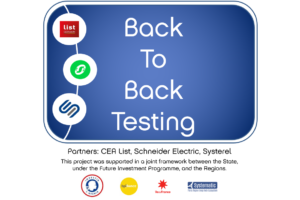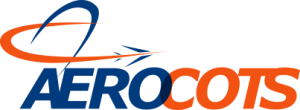Systerel participates in the future of critical systems through collaborative R&D projects.
 KICS2
KICS2
In the increasingly interconnected context of Industry 4.0 and the IIoT (Industrial Internet of Things), a growing number of companies are seeking equipment that can ensure both operational safety and cybersecurity.
To tackle these challenges Systerel, Schneider Electric and ARCYS have combined their know-how around the KICS2 project.
The KICS2 project, laureate of the “France 2030” national plan, aims to build a sovereign Safe & Secure ecosystem adapted to the future of critical systems. This ambitious project aims to lay the foundation for a range of secure equipment that can maintain their reliability over time without incurring extra costs, all while accommodating essential cybersecurity updates.
It is based on:
- a generic computing core (communications, cybersecurity, safe processing),
- the ability to create sensors / actuators or a gateway by adding hardware and software customization to the generic core.
Thus, KICS2 will optimize the interplay between affordability, practicality, and performance, charting a path toward sustainable and effective solutions.
The first product stemming from KICS2, is the SnS StaR communicating static relay.
LEIA 
As the number and variety of IoT devices increases, so does the size of IoT-related software. And more software means considerably more vulnerabilities to contend with. CEA-List and Systerel are working together to develop a powerful and original smart analysis platform to guarantee the security of the code that powers with these devices. The research is taking place under the LEIA project, which was awarded funding through the French government’s Grand Défi instrument for technology projects.
Systems that include IoT devices are particularly difficult to protect against security threats. Each connection point can create opportunities for hackers to attack. In critical infrastructures, the consequences can be disastrous. To make matters worse, these complex systems include more and more software with a whole new set of unknowns—like who developed the software and how—that make it very difficult to guarantee security with any degree of assurance. And, because IoT systems are modular, every time software is added, new vulnerabilities are potentially introduced into the system.
The LEIA project, winner of a French government Grand Défi grant for technology projects, is providing an opportunity for smart digital systems specialist CEA-List and Systerel to pool their knowledge of formal methods, language analysis, and artificial intelligence. The partners have come up with an original approach that will leverage their powerful software analysis tools and learning algorithms to hone in on pertinent security targets.
The cost-effective IoT security platform they are developing will be capable of automatically and incrementally analyzing IoT software and software updates. It will also speed up the time-consuming software validation process.
The future platform will bring key tools and capacities in support of France’s digital sovereignty and the EU’s strategic autonomy.
Back To Back Testing 
In a collaborative approach to innovation, Systerel and their partners, the CEA-List and Schneider Electric, are once againuniting their resources and skill sets on a new project: Back-to-Back Testing B2BT.
B2BT offers means to optimize and master the design and deployment of distributed control architectures based on the IEC 61499 standard.
In all industry sectors, engineers are facing the challenges of increasing complexity and safety demands while facing increasing pressure to reduce cost and time to market.
For the industry of the future, a key challenge is to move from a highly centralized approach to automation, to a more distributed approach where control functions are executed in field devices. This approach, where the automation logic uses the embedded computing resources of smart instruments and actuators is called “Distributed Control”;
The engineering challenge associated with IEC 61499-based Distributed Control is to determine how best to distribute the control logic to the available computing resources while satisfying the overall requirements (performance, availability, communication bandwidth, etc.) specific to each installation.
To meet this challenge, B2BT uses software tools consisting of a digital twin combined with formal methods and automated testing in a two-phase approach. The first phase uses a digital twin to feed estimation tools that guide the designer to the best architecture compromise. The second phase, thanks to the B2BT technology, generates and automatically executes tests that validate the conformity of the actually deployed architecture to the original model.
With this two-phase approach, the design engineer is able to develop the best compromise between cost, performance, safety and time to market.
We would like to thank INERIS for their continued support and interest in the underlying technologies and their potential future uses.
The project is:
- supported by Systematic
- financially supported by BPI France and the Paris authorities.
- supported in a joint framework between the government and the regional authorities.
INGOPCS
Cyber-attacks can have deep consequences, especially when they target essential operators in the sectors of energy, transportation, water supply, etc.
Vital industrial systems therefore require a significant improvement of their security level.
The OPC-UA protocol is more and more deployed in industry and becomes a key element of industrial systems. It is one of the rare open standards to address security.
Systerel is an OPC foundation member and is the INGOPCS project leader.
The INGOPCS project, with the support of ANSSI and DCNS, aims at:
- developing an open-source and secure implementation of the OPC-UA protocol,
- verifying this implementation with specialized tools (applying formal methods),
- demonstrating that the developed software stack can be integrated in the partners’ future solutions,
- demonstrating that the global deployment of the OPC-UA protocol satisfies the security requirements of industrial networks.
Beyond the bare stack, the outcome of the INGOPCS project will therefore be a new French industrial cluster of products and services addressing the market needs in cybersecurity.
The project is certified by Systematic and Minalogic centers of innovation.
Systerel’s partners for this project are: Atos Worldgrid, EDF, Schneider Electric Automation, ARC Informatique, Éolane, TrustInSoft, CEA-List, Telecom ParisTech.

AEROCOTS (FUI-AAP15)
Current aircraft’s electrical distribution systems are specifically designed, which generates higher costs and longer time-to-market for aeronautics industrial companies.
The AEROCOTS project (Advanced Electrical Reliable & Optimized Core Off The Shelf) aims to solve this issue for under 100 passengers aircrafts market (including helicopters).
In a processus of embedded electrical system development, the end client (aircraft manufacturer) submits his requirements to the equipment supplier (Leach International Europe, project leader) which implements them.
These requirements gather the power supply’s securing strategy on the entire aircraft including emergency and degraded modes.
The power distribution unit is designed using modular and solutions-oriented configurable components. One of the issues is to produce user-friendly and reliable configuration tools together with a DO178 DAL B certification kit which enables the validation of the power system unit design new configuration with less effort.
Systerel is the main contributor of this work package.
To this end, Systerel relies on its Eclipse technologies expertise for the development of highly-designed HMI and on its formal methods expertise for the automation of verification procedures.
ADVANCE (FP7)
The overall objective of the ADVANCE project is the development of a unified tool-based framework for automated formal verification and simulation-based validation of cyber-physical systems.
Within the scope of this project, Systerel ensures the maintenance and evolution of the RODIN platform.
Systerel also works with Alstom Transport on formal modeling Event-B of a signaling system. This case study analyzes the technical feasibility of a new computer based interlocking design suggested ?by Systerel.
The goal is to get an alternative solution as safe as current solutions but at a lower cost.
This work is an opportunity for Systerel (otherwise ‘its’ refers to nothing) to strengthen its system skills in signaling, as well as its thorough knowledge of formal modeling techniques in the railway sector.
Learn more: www.advance-ict.eu
openETCS (ITEA2)
The European Union requires the replacement of railway signalling systems currently used in Europe (some thirty heterogeneous systems often incompatible) by a unique system, the ETCS (European Train Control System)
This specifications set standardize the future European railway network.
The OpenETCS aims to strengthen the ETCS specification set by implementing formal methodologies and proof techniques. This project gathers major European railway field actors : manufacturers, operators, researchers, and experts.
To this project, Systeral brings its expertise in complex systems control, and especially in formal methods such as B method, Event-B modelization, and SCADE.
Learn more: www.openetcs.org

